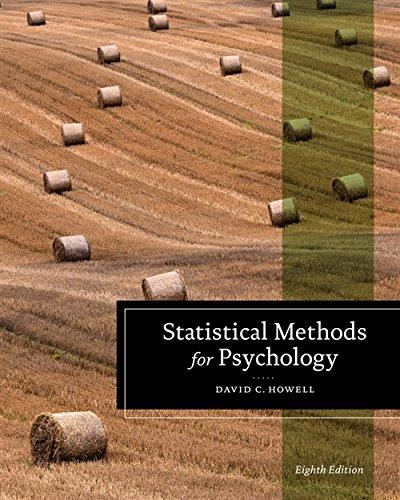Hout, Duncan, and Sobel (1987) reported on the relative sexual satisfaction of married couples. They asked each
Question:
Hout, Duncan, and Sobel (1987) reported on the relative sexual satisfaction of married couples.
They asked each member of 91 married couples to rate the degree to which they agreed with “Sex is fun for me and my partner” on a four-point scale ranging from 1, “never or occasionally”, to 4, “almost always.” The data appear below (I know it’s a lot of data, but it’s an interesting question):
Husband 1 1 1 1 1 1 1 1 1 1 1 1 1 1 1 Wife 1 1 1 1 1 1 1 2 2 2 2 2 2 2 3 Husband 1 1 1 1 2 2 2 2 2 2 2 2 2 2 2 Wife 3 4 4 4 1 1 2 2 2 2 2 2 2 2 3 Husband 2 2 2 2 2 2 2 2 2 3 3 3 3 3 3 Wife 3 3 4 4 4 4 4 4 4 1 2 2 2 2 2 Husband 3 3 3 3 3 3 3 3 3 3 3 3 3 4 4 Wife 3 3 3 3 4 4 4 4 4 4 4 4 4 1 1 Husband 4 4 4 4 4 4 4 4 4 4 4 4 4 4 4 Wife 2 2 2 2 2 2 2 2 3 3 3 3 3 3 3 Husband 4 4 4 4 4 4 4 4 4 4 4 4 4 4 4 4 Wife 3 3 4 4 4 4 4 4 4 4 4 4 4 4 4 4 Start out by running a match-sample t test on these data. Why is a matched-sample test appropriate?
Step by Step Answer:







